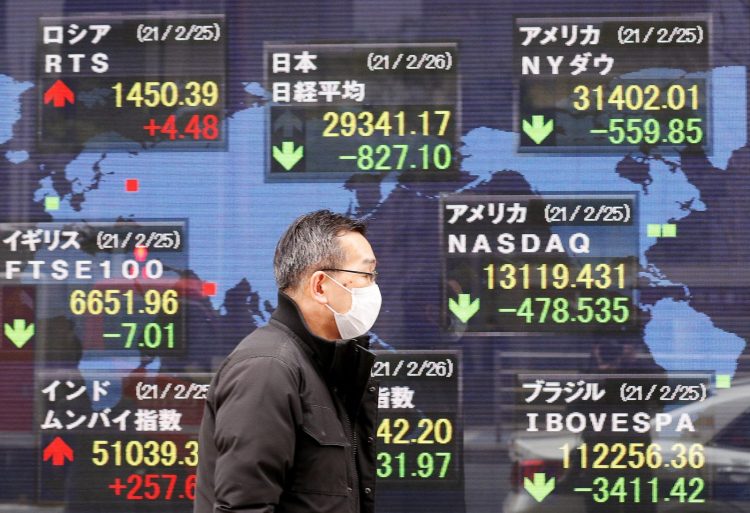Publisher: Maaal International Media Company
License: 465734
Stocks drift, dollar steadies as focus turns to Asian currencies
Global stocks were in a tight range on Tuesday and the dollar clawed back some of its recent losses against Asian counterparts as investors’ concerns about U.S. tariffs and their impact on economic growth re-emerged, Reuters reported.
Those worries coupled with pledges from key oil producers to boost supply also kept crude prices languishing near four-year lows.
The erratic trade policies of U.S. President Donald Trump have fuelled significant waves of dollar selling since April as investors shifted away from U.S. assets, pushing the euro, yen and Swiss franc higher.
اقرأ المزيد
That dollar selling has now spread to Asia underscored by the Taiwan dollar’s record surge in recent sessions, which has stoked speculation that a revaluation of regional foreign exchange was possible to win U.S. trade concessions.
Its rally suggested a big unwinding was under way and shone a light on one economy, among many, where years of big trade surpluses have built up large long dollar positions at exporters and insurers that are now under question and on edge.
The focus turned to Hong Kong on Tuesday, where the de facto central bank bought $7.8 billion to stop the local currency from strengthening and breaking its peg to the greenback.
“The real action today is in Asian FX,” said Charu Chanana, chief investment strategist at Saxo in Singapore.
“If these currencies keep strengthening sharply, it could spark fears of a ‘reverse Asian currency crisis’, with potential ripple effects in the bond market amid fears that Asian institutions reassess their unhedged exposure to Treasury holdings.”
On the mainland, China’s yuan strengthened to its highest level since March 20 at 7.23 per dollar.
The Taiwan dollar was fairly sedate on Tuesday last fetching 30.185 per U.S. dollar, not far from the near three-year high of 29.59 it touched on Monday.
In stocks, MSCI’s broadest index of Asia-Pacific shares outside Japan was 0.2% higher with Japan closed for a holiday. Taiwan stocks were little changed.
Chinese markets returned from an extended holiday with the blue-chip index up nearly 1%. Hong Kong’s Hang Seng rose 0.69%.
European stock futures pointed to a subdued open in the region ahead of a smattering of manufacturing data that will probably provide an indication of the impact of tariffs. U.S. stock futures slipped as well.
Investor attention has been on the possibility of easing trade tensions between the U.S. and China after Beijing last week said it was evaluating an offer from Washington to hold talks over tariffs.
But with few details, investors have been left trying to make sense of headlines coming out of the White House.
U.S. President Donald Trump said on Sunday that Washington is meeting with many countries, including China, and that his main priority with China is to secure a fair deal.
Trump also on Monday slapped a 100% tariff on movies produced outside the United States but offered little clarity on how the levies would be implemented.
Saxo’s Chanana said tariff headlines were doing more to drive market direction. “And that means the tactical risk-reward could still be tilted to the upside with hard data holding up and sentiment buoyed by hopes of trade deals.”
Data on Monday showed the growth of the U.S. services sector picked up in April, while a measure of prices paid by businesses for materials and services raced to the highest level in more than two years, signalling a build up in inflation pressures due to tariffs.
Attention shifts to the Federal Reserve’s policy decision on Wednesday, where the central bank is widely expected to keep rates steady but the spotlight will be on how policymakers are likely to navigate a tariff-ridden path.
“The Fed remains caught between a rock and a hard place,” said Christian Scherrmann, DWS chief U.S. economist. “We think they will opt for a slightly more hawkish tone, but more in the direction of an extended pause than a potential hike.”
Traders are pricing in 75 basis points of easing this year with the first move possible in July, LSEG data showed.
In commodities, oil steadied on Tuesday after hitting four-year lows in the previous session that was driven by an OPEC+ decision to accelerate output increases.
Gold prices touched a one-week high on safe-haven demand.








